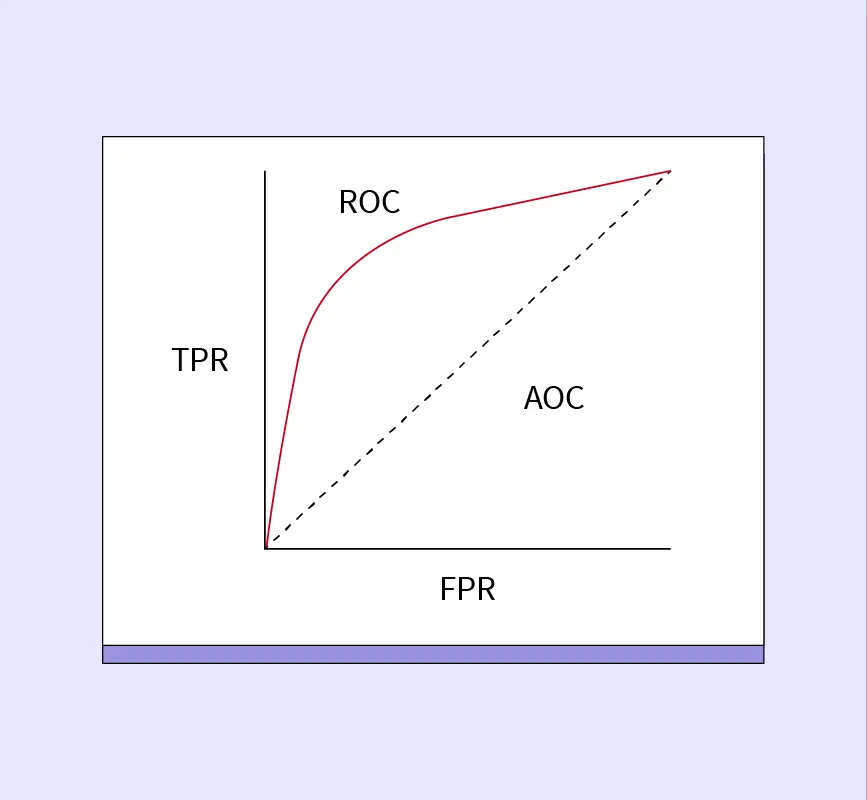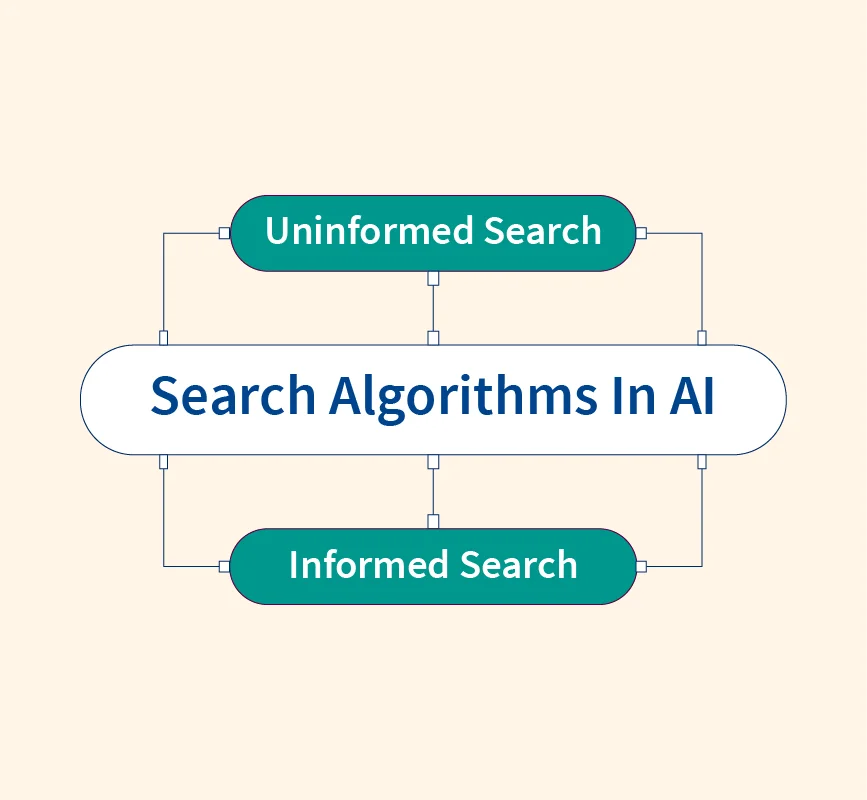Data science has emerged as one of the most sought-after fields in the modern job market, offering high demand, competitive salaries, and immense career growth. It integrates various disciplines such as statistics, machine learning, programming, and big data technologies to extract meaningful insights from complex datasets.
According to the U.S. Bureau of Labor Statistics, the demand for data scientists is projected to grow by 36% from 2021 to 2031, significantly faster than the average for all occupations. This guide will walk you through the essential subjects covered in data science programs, helping you build a strong foundation for a successful career in the field.
Core Subjects in Data Science Programs
1. Statistics and Probability
Statistics and probability form the backbone of data science. They provide the mathematical framework needed to make sense of data, test hypotheses, and make predictions. Key concepts include hypothesis testing, probability distributions, and regression analysis, which help data scientists understand the underlying patterns in data.
- Key Topics:
- Hypothesis testing
- Probability distributions
- Descriptive statistics
- Inferential statistics
2. Programming
Programming is an essential skill for data scientists, enabling them to manipulate and analyze large datasets efficiently. Python, R, and SQL are the most commonly used languages in data science, each serving specific purposes such as data wrangling, visualization, and database management.
- Popular Programming Languages:
- Python: Widely used for data manipulation and machine learning.
- R: Best suited for statistical analysis and visualization.
- SQL: Essential for querying databases and managing structured data.
3. Machine Learning
Machine learning involves using algorithms to detect patterns in data and make predictions without explicit programming. There are three main types of machine learning: supervised, unsupervised, and reinforcement learning. Common algorithms include regression, clustering, and neural networks.
- Key Algorithms:
- Linear and logistic regression
- Decision trees
- K-means clustering
- Neural networks
4. Data Mining and Data Wrangling
Data wrangling refers to the process of cleaning and preparing raw data for analysis, while data mining focuses on discovering patterns and relationships in large datasets. Both processes are critical in ensuring that data is usable and insights are accurate.
- Techniques and Tools:
- Data cleaning and preprocessing
- Feature engineering
- Tools: Pandas, NumPy
5. Databases and Big Data Technologies
Data scientists must be proficient in handling vast amounts of structured and unstructured data. Understanding relational databases (e.g., MySQL, PostgreSQL) and NoSQL databases (e.g., MongoDB) is essential. Additionally, big data technologies like Hadoop, Spark, and cloud-based platforms allow data scientists to work with large datasets efficiently.
- Technologies:
- Relational databases (SQL)
- NoSQL databases
- Hadoop, Spark
- Cloud platforms (AWS, Google Cloud, Azure)
6. Data Visualization
Effective data visualization is key to communicating insights clearly. Tools like Matplotlib, Seaborn, and Tableau are commonly used to create charts, graphs, and dashboards that help stakeholders understand the data.
- Popular Tools:
- Matplotlib and Seaborn (Python libraries)
- Tableau and Power BI (business intelligence tools)
7. Ethics and Data Privacy
With great data comes great responsibility. Ethical considerations in data science are crucial, especially in ensuring that data is collected and used in a way that respects privacy and complies with regulations like the General Data Protection Regulation (GDPR) and the California Consumer Privacy Act (CCPA).
- Topics:
- Data privacy regulations (GDPR, CCPA)
- Ethical data collection and usage
8. Domain-Specific Applications
Data science is applied across various industries, from healthcare to finance, each with its own set of challenges and opportunities. Understanding the domain-specific requirements helps data scientists develop targeted solutions.
- Industries:
- Healthcare: Predictive analytics for patient outcomes.
- Finance: Fraud detection and risk assessment.
- Marketing: Customer segmentation and behavior analysis.
Electives and Specializations
Many data science programs offer elective courses that allow students to specialize in specific areas such as artificial intelligence (AI), deep learning, or data engineering. These electives provide a deeper understanding of advanced techniques and technologies, enabling professionals to focus on areas of personal or industry interest.
- Popular Specializations:
- Deep learning and neural networks
- Data engineering and data pipelines
- AI and machine learning
Best Data Science Program Topics
1. Data Visualization
Data visualization is essential for communicating complex data insights in an understandable format. Advanced techniques like heatmaps, treemaps, and interactive dashboards help reveal hidden patterns and trends in large datasets, making it easier for decision-makers to act on the information.
- Key Techniques:
- Heatmaps
- Treemaps
- Scatter plots and interactive dashboards
2. Machine Learning
While basic machine learning topics cover algorithms like regression and clustering, advanced topics take the understanding further. Ensemble methods, such as Random Forests and Gradient Boosting Machines (GBMs), and transfer learning, which reuses a pre-trained model for new tasks, represent cutting-edge developments in the field.
- Advanced Topics:
- Ensemble methods (e.g., Random Forest, GBM)
- Transfer learning
- Support vector machines
3. Deep Learning
Deep learning is a subfield of machine learning that focuses on neural networks with many layers (hence “deep”). Neural network architectures such as Convolutional Neural Networks (CNNs) for image recognition, Recurrent Neural Networks (RNNs) for sequential data, and Generative Adversarial Networks (GANs) for generating synthetic data have become critical for AI applications.
- Neural Network Architectures:
- CNNs for image data
- RNNs for time-series or natural language data
- GANs for creating synthetic data
4. Data Mining
Advanced data mining techniques allow data scientists to uncover hidden patterns and relationships within data. Methods like association rule mining help businesses understand product correlations, while clustering can group customers based on purchasing behaviors.
- Techniques:
- Association rule mining
- Clustering algorithms (e.g., K-means, DBSCAN)
5. Programming Languages
Python and R remain essential languages in data science. However, advanced topics in these languages include optimization techniques, parallel processing, and more complex data manipulation tasks. Python libraries such as Dask help with handling larger datasets, while R is invaluable for high-quality statistical reports.
- In-depth Coverage:
- Advanced Python libraries (e.g., Dask for parallel processing)
- R for in-depth statistical analysis
6. Statistics
Advanced statistical methods like Bayesian inference and time series analysis are critical for predicting future trends and making data-driven decisions. Bayesian methods offer a flexible approach to probability, while time series analysis is used extensively in economics and finance.
- Topics:
- Bayesian statistics
- Time series analysis
7. Cloud Computing
Cloud platforms such as AWS, Google Cloud, and Azure are revolutionizing how data science is conducted. These platforms offer scalable storage, compute power, and integrated machine learning tools, allowing data scientists to work with big data more efficiently.
- Popular Cloud Platforms:
- AWS (Amazon Web Services)
- GCP (Google Cloud Platform)
- Azure (Microsoft Cloud)
8. Exploratory Data Analysis (EDA)
EDA is a critical first step in understanding a dataset before applying more advanced models. Advanced EDA techniques include outlier detection, pattern identification, and robust missing value handling.
- Techniques:
- Handling missing data
- Outlier detection
- Pattern recognition
9. Artificial Intelligence (AI)
AI encompasses more than just machine learning. Topics like natural language processing (NLP), computer vision, and robotics highlight AI’s vast range of applications. AI technologies can enhance customer experiences, improve automation, and more.
- Beyond Machine Learning:
- NLP (Natural Language Processing)
- AI in robotics and automation
- Computer vision
10. Big Data
Handling massive datasets poses unique challenges that traditional databases and software cannot address. Big data solutions, such as Hadoop and Spark, enable the storage, processing, and analysis of huge volumes of data across distributed computing environments.
- Challenges and Solutions:
- Storage and processing of vast datasets
- Technologies: Hadoop, Spark, and Kafka
11. Data Structures
Understanding the right data structures can significantly optimize algorithms and processes in data science. Advanced data structures like trees and graphs are particularly useful in applications such as social network analysis, search algorithms, and recommendation engines.
- Relevant Structures:
- Trees (e.g., decision trees)
- Graphs for network data
12. Natural Language Processing (NLP)
NLP is a subset of AI focused on interpreting and processing human language. Common applications include sentiment analysis, text classification, and chatbots. NLP is critical for industries such as healthcare, where large volumes of unstructured text data exist.
- NLP Techniques:
- Text classification
- Sentiment analysis
- Named Entity Recognition (NER)
13. Business Intelligence (BI)
BI tools, such as Power BI and Tableau, complement data science by offering accessible ways to visualize data, making insights more digestible for business stakeholders. These tools enable the transformation of raw data into actionable insights.
- BI Tools:
- Power BI
- Tableau
14. Data Engineering
Data engineering focuses on building the infrastructure required for data storage, preparation, and movement. Skills in creating ETL pipelines, data warehousing, and maintaining data quality are crucial for any successful data science project.
- Responsibilities:
- Building data pipelines
- Managing data lakes and warehouses
- Ensuring data integrity
15. Database Management
Advanced database concepts, such as normalization and indexing, are essential for managing data efficiently. Understanding these techniques helps in the optimization of databases for faster query execution and better data organization.
- Concepts:
- Normalization
- Indexing
16. Linear Algebra
Linear algebra is critical for understanding many machine learning models, especially deep learning. Concepts such as matrices, vectors, and eigenvalues form the basis of algorithms used in machine learning.
- Key Concepts:
- Matrix operations
- Eigenvectors and eigenvalues
17. Linear Regression
Linear regression is the simplest form of machine learning but remains widely used. Different variations, such as ridge regression and lasso regression, help tackle problems of overfitting and multicollinearity.
- Types of Linear Regression:
- Simple linear regression
- Ridge and lasso regression
18. Spatial Sciences
Data science in spatial sciences allows for the analysis of geographic data. Spatial data analysis helps in understanding location-based trends and patterns, such as those seen in urban planning or environmental studies.
- Applications:
- Geographic data analysis
- Mapping and spatial trends
19. Statistical Inference
Statistical inference involves making generalizations about a population based on a sample. Key concepts like hypothesis testing, confidence intervals, and p-values are fundamental to data-driven decision-making.
- Key Concepts:
- Hypothesis testing
- Confidence intervals
20. Probability
Advanced probability techniques, such as conditional probability and Bayes’ theorem, are essential for understanding uncertainty in data and building predictive models.
- Concepts:
- Conditional probability
- Bayes’ theorem
Data Science Syllabus for Beginners
| Module | Topics Covered |
| Introduction to Data Science | Overview of data science, applications, industry use cases, and career prospects. |
| Statistics and Probability | Descriptive statistics, inferential statistics, probability theory, probability distributions, hypothesis testing. |
| Mathematics for Data Science | Linear algebra, calculus, matrix operations, optimization techniques. |
| Programming (Python/R) | Basics of Python/R, data types, loops, functions, libraries like Pandas, NumPy, Scikit-learn. |
| Data Wrangling | Data cleaning, handling missing values, outliers, data transformation, feature engineering. |
| Exploratory Data Analysis (EDA) | Data visualization using Matplotlib, Seaborn, and understanding data patterns through summary statistics. |
| Machine Learning Basics | Supervised learning (e.g., regression, classification), unsupervised learning (e.g., clustering), introduction to popular algorithms. |
| Databases and SQL | SQL basics, database management, CRUD operations, joins, and querying data from databases. |
| Big Data Fundamentals | Introduction to Hadoop, Spark, and tools for handling large datasets. |
| Data Visualization | Tools like Tableau, Power BI, and advanced charting techniques (e.g., heatmaps, treemaps). |
| Introduction to AI and Deep Learning | Neural networks, CNNs, RNNs, GANs, and frameworks like TensorFlow, PyTorch. |
| Ethics and Data Privacy | Data privacy laws (e.g., GDPR, CCPA), ethical AI, responsible data usage, and bias in machine learning models. |
| Data Mining and Data Wrangling | Advanced techniques in data preprocessing, association rule mining, clustering techniques. |
| Cloud Computing | Cloud platforms like AWS, Google Cloud, Azure, and their applications in data science projects. |
| Natural Language Processing (NLP) | Sentiment analysis, text classification, chatbots, and NER (Named Entity Recognition). |
| Data Engineering | Data pipelines, ETL processes, data warehousing, data lakes, and maintaining data integrity. |
| Projects and Case Studies | Real-world data science projects, capstone work, industry case studies to build portfolios. |
| Career Guidance & Certifications | Exploring data science roles (e.g., data scientist, data engineer, data analyst), popular certifications (e.g., CAP, CDS, DSCC), and industry demand. |
Projects and Capstone Work
Practical experience is a critical component of data science education. Projects and capstone work allow students to apply theoretical knowledge to real-world problems, helping them build portfolios that showcase their skills to potential employers.
- Examples of Projects:
- Predictive modeling for business outcomes
- Data visualization dashboards for complex datasets
- Machine learning models for classification problems
Prerequisites for a Data Science Course
Before diving into data science, students should have a solid foundation in mathematics, programming, and problem-solving. While many assume advanced coding skills are mandatory, beginner-friendly languages like Python make data science accessible to a wide range of learners.
- Essential Skills:
- Basic math and statistics
- Problem-solving abilities
- Beginner-level programming knowledge (Python or R)
Is Coding Needed in Data Science?
Coding is indispensable for data scientists. Python and R are among the most popular languages, allowing professionals to manipulate datasets, build models, and automate workflows. Learning these languages opens up a world of possibilities for automating data-related tasks and conducting complex analyses.
- Benefits of Coding:
- Automation of data processes
- Ability to build machine learning models
- Enhancing efficiency and scalability with programming
Emerging Trends and Technologies in Data Science
The field of data science is constantly evolving. Emerging technologies such as Automated Machine Learning (AutoML), Explainable AI (XAI), and edge computing are shaping the future of data science, making it more accessible and transparent.
- Key Trends:
- AutoML: Simplifies the machine learning process.
- Explainable AI: Ensures transparency in model decision-making.
- Edge computing: Processes data closer to the source for faster results.
Tools and Libraries for Data Science
Several tools and libraries are fundamental for data science professionals, allowing them to efficiently analyze and visualize data. Python libraries like Pandas, NumPy, and Scikit-learn, along with deep learning frameworks like TensorFlow and PyTorch, are essential in handling diverse data science tasks.
- Key Tools:
- Jupyter Notebook, RStudio
- Google Colab (for cloud-based coding)
- Python libraries: Pandas, NumPy, Matplotlib
Career Paths and Certifications
1. Data Scientist
Data scientists are responsible for extracting insights from data and building predictive models. Their role combines expertise in programming, statistics, and domain knowledge, often requiring proficiency in machine learning and big data tools.
- Responsibilities:
- Data cleaning and analysis
- Building machine learning models
- Communicating insights to stakeholders
2. Data Engineer
Data engineers focus on creating and maintaining the infrastructure that allows data scientists to work with clean, well-organized data. This role includes designing data pipelines, building databases, and ensuring data availability.
- Responsibilities:
- Data pipeline creation
- Database management
- Data warehousing
3. Data Analyst
Data analysts work on understanding trends within data and communicating actionable insights. They typically focus on creating reports, dashboards, and visualizations to help businesses make data-driven decisions.
- Responsibilities:
- Data analysis and reporting
- Creating dashboards
- Collaborating with business stakeholders
Popular Data Science Certifications
Certifications validate expertise and provide a competitive edge in the job market. Notable certifications include the Certified Analytics Professional (CAP), Certified Data Scientist (CDS), and the Data Science Certification Consortium (DSCC).
- Top Certifications:
- Certified Analytics Professional (CAP)
- Certified Data Scientist (CDS)
- Data Science Certification Consortium (DSCC)
Conclusion
Data science is an interdisciplinary field that combines mathematics, programming, machine learning, and domain knowledge to unlock the power of data. Mastering the core subjects and staying updated with emerging trends is essential for anyone looking to pursue a career in data science. With a strong foundation in the subjects discussed above, aspiring professionals can navigate the complexities of data science and capitalize on its growing career opportunities.
Read More
FAQ’s
What does a Data Scientist do?
A data scientist analyzes complex datasets to extract meaningful insights, build predictive models, and solve business problems. They use a combination of statistics, machine learning, and programming to interpret data and communicate actionable findings to stakeholders
How long does it take to become a professional data scientist?
The time it takes to become a professional data scientist varies. For individuals with a background in programming or statistics, it can take 6 months to a year with intensive study. For others, it may take longer, especially if foundational skills need to be built.
Is data science all math?
While mathematics is an essential component of data science, the field also requires knowledge of programming, data handling, machine learning, and domain expertise. It’s a balance between theoretical knowledge and practical application
Is data science hard?
Data science can be challenging because it requires a blend of skills, including mathematics, coding, and analytical thinking. However, with consistent practice and the right resources, it is a field that can be mastered over time.
Can I do data science if I am weak in math?
Yes, you can still pursue data science even if you’re weak in math. Many concepts can be learned gradually, and tools like machine learning libraries simplify complex mathematical processes. However, improving your math skills will significantly enhance your ability to succeed.
Who is eligible for data science?
Anyone with a background in mathematics, programming, or a related field is eligible for data science. Even if you’re from a non-technical background, many online courses are available to help build foundational knowledge in programming, statistics, and data handling.
Is data science easy for non-IT students?
Data science can be challenging for non-IT students, but it is not impossible. Many programs are tailored for beginners and offer step-by-step guidance in coding, data analysis, and machine learning. With dedication, non-IT students can excel in data science.


